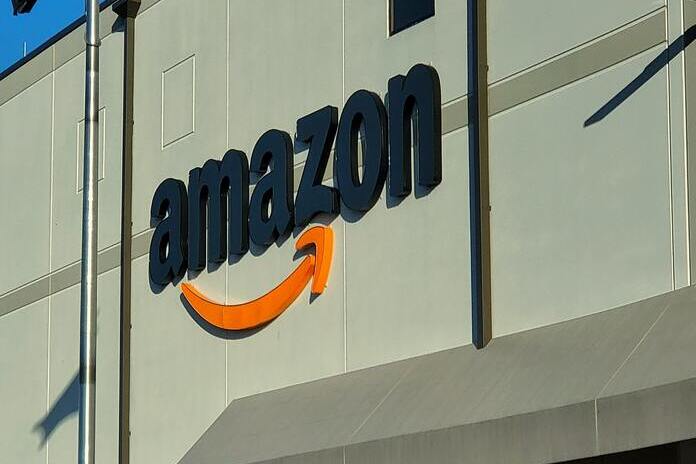Amazon Stock (NASDAQ:AMZN)
In my piece, I emphasize the company’s remarkable financial record over the last decade, as well as its enormous growth prospects, which position the company for future success. With excellent topline growth and rising margins, management exhibited high efficiency of investments in research and development coupled with strategic acquisitions. The notion that Amazon (NASDAQ:AMZN) represents a compelling investment opportunity is backed by my valuation research, which reveals that the current market price of Amazon stock does not completely reflect its future growth potential.
Information About the Company
Amazon is one of the world’s largest corporations, and it is well-known for disrupting a variety of industries. With its marketplace, the firm transformed the way users shop online. Amazon serves consumers through its online and physical businesses. Amazon’s success is based on its dedication to low prices, fast and free shipping, user-friendly features, and prompt customer support.
In addition to serving customers, Amazon also offers services to sellers, developers, businesses, content creators, and advertisers. Amazon’s seller programs enable businesses of all sizes to expand and sell their products in its stores. Amazon Web Services [AWS] provides a wide range of on-demand technological services to developers and companies, including computing, storage, database, analytics, and machine learning services. Amazon also provides content creators with programs that allow them to publish and sell their work, as well as advertising options that help businesses reach new customers.
With more than 1.5 million employees worldwide, Amazon is a big employer and continues to recruit top talent in software development, computer science, and other technological sectors.
The company divided its operations into three divisions: North America, International, and Amazon Web Services [AWS]. North America accounts for the majority of sales (61% of total revenues).
Financials
First of all, I would like to zoom out and look at the financials for the last decade. In this regard, I can state that Amazon’s revenue has increased dramatically over the last decade, with the gross margin increasing significantly from 27.2% to 43.8%. But, it is crucial to note that the company did not show any progress in one of my favorite efficiency indicators, namely revenue per person, implying that they may have hired far more workers than were required to generate genuine revenue growth. This could also imply that management’s recent and ongoing huge layoffs of AMZN employees were the correct move and will not severely impact the company’s operations.
Due to extensive investments in R&D and strategic acquisitions, the company was able to continue revenue growth at a CAGR of nearly 24%. The company’s R&D investments expanded faster than its topline, beginning with a 9% R&D to-sales ratio in 2013 and increasing to 14% in the fiscal year that ended December 31, 2022. According to Wikipedia, Amazon bought more than 100 enterprises across many industries and nations within the last 25 years, including Wikipedia.
On February 2, 2023, Amazon revealed its most recent quarterly financial reports. During 4Q2022, the company reported revenue that was higher than expected but EPS that was lower than expected.
Amazon’s Most Recent Quarterly Results
Quarterly figures show that the company’s topline is continuing to rise. Net sales grew 9% in the quarter to $149.2 billion, up from $137.4 billion at the same time in 2021. Excluding the unfavorable impact of foreign exchange, net sales grew 12% compared to the fourth quarter of last year.
The North American segment was particularly robust, with sales growing 13% YoY to $93.4 billion, or 14% when excluding foreign exchange moves. This expansion demonstrates Amazon’s strong position in the US market and capacity to capture a larger share of consumer spending. But, the overseas market was less successful, with revenues down 8% year on year to $34.5 billion. Excluding foreign exchange, sales in the overseas category increased by 5%. This disparity underlines the difficulties Amazon confronts in globalizing its e-commerce platform as it navigates multiple cultural and economic situations. Amazon’s AWS business saw a 20% YoY rise in revenue to $21.4 billion. This expansion illustrates the continuous demand for cloud computing services as well as Amazon’s market dominance.
Nevertheless, Amazon’s fourth-quarter financial figures show that the company’s strengths in e-commerce and cloud computing remain strong. While expanding abroad and managing currency fluctuations provide hurdles, Amazon’s dominant position in the North American market and success in the AWS segment position the business well for future expansion.
Amazon’s Fiscal Year 2022 Results
Net sales climbed by 9% to $514.0 billion in FY2022, up from $469.8 billion the previous year. Sales in North America increased 13% year on year to $315.9 billion, while sales in International fell 8% to $118.0 billion. The AWS segment sales climbed by 29% to $80.1 billion, according to the AWS segment sales.
Throughout the last year, Amazon’s operating cash flow climbed by 1% to $46.8 billion. Nonetheless, free cash flow declined to an outflow of $11.6 billion during the past twelve months, compared with an outflow of $9.1 billion a year earlier. The company’s free cash flow decreased dramatically in past years due to soaring capital expenditures – the corporation invested around $165 billion between 2020-2022 to fuel future growth. CAPEX increases are mostly due to expenditures in technical infrastructure [the majority of which is to support AWS business growth] and increased capacity to support the fulfillment center network.
Furthermore, Amazon’s net loss in 2022 was $2.7 billion, compared to its net income of $33.4 billion in 2021. The loss comprises a $12.7 billion pre-tax valuation loss from the common stock investment in Rivian Automotive, Inc (NASDAQ:RIVN), compared to an $11.8 billion pre-tax valuation gain in 2021. The North American sector also recorded an operational loss of $2.8 billion compared to an operating profit of $7.3 billion in 2021, while the International segment reported a loss of $2.8 billion.
Management has offered guidance for the first quarter of 2023, with a moderate YoY net revenue increase expected. However, this forecast is based on the premise that exchange rates will have an adverse impact of around 210 basis points. In terms of operating income, Amazon plans to generate between $0 billion and $4.0 billion in the first quarter of 2023, compared to $3.7 billion at the same time last year, in terms of operating income. It’s crucial to highlight that this guidance assumes no more business acquisitions, restructurings, or litigation settlements are completed this quarter.
From a balance sheet viewpoint, I can conclude that the company’s leverage is moderate, which is expected to sustain CAPEX for future growth. Moreover, the company has a big balance of cash of $70 billion as of the 2022 year-end. Furthermore, AMZN’s robust sales growth trajectory and dominant market position indicate that the company is resilient enough to produce enough cash flows to service its debt commitments.
Valuation
Amazon is a disruptor with exceptional revenue growth and significant growth potential due to continual innovation and the development of new business lines with large addressable markets. It is not unexpected, therefore, that the company’s valuation measures have risen in recent decades.
Before we go into the valuation data, I’d like to draw readers’ attention to the fact that current multiples are substantially lower than the company’s 5-year norms. This could indicate undervaluation, so we need to investigate further.
To determine AMZN stock fair value I utilized discounted cash flow [DCF] approach utilizing a WACC of 10% which was provided by Gurufocus. Revenue projections for the next decade were based on consensus expectations, and an extremely cautious assumption for free cash flow levered margin was made, which was anticipated to be twice as low as the 5-year average of 5.4%. A yearly expansion of 100 basis points was incorporated into the research to account for anticipated growth in the free cash flow margin.
After accounting for all of the preceding assumptions, the fair value of Amazon’s business was calculated to be 88% greater than its present market capitalization, showing that the stock is vastly undervalued. Yet, it is also crucial to understand that DCF analysis relies significantly on assumptions. As a result, I opted to adopt more pessimistic revenue growth estimates to comprehend the stock’s undervaluation in the worst-case situation. Consensus estimates predict a CAGR for revenue of about 10%, which I reduced by half for my pessimistic scenario.
DCF indicates that the stock is about 28% undervalued even under very pessimistic top-line growth assumptions. Furthermore, Morningstar estimates that Amazon stock is now trading at a 29% discount, while Argus Research has a target price of $165 per share, implying a 65% upside potential from current levels. The figure below shows how actual stock prices tracked Morningstar’s fair value estimates over a broad time period.
Because Amazon is a massive corporation with several business divisions, AMZN investors face numerous dangers.
To begin with, Amazon’s core e-commerce business confronts severe competition from both traditional stores such as Walmart (NYSE:WMT) and Target (NYSE:TGT) as well as alternative online retailers such as Shopify (NYSE:SHOP) or Alibaba (NYSE:BABA). Rivals have tremendous resources and invest extensively in innovation to improve the reach for their online goods, making Amazon’s market share more difficult to sustain. Amazon’s current big star, AWS, likewise competes in a very competitive environment with competitors such as Microsoft (NASDAQ:MSFT) and Alphabet (NASDAQ:GOOGL). As a result, Amazon must continue to invest extensively in innovation in order to adapt to a highly competitive climate.
The second important danger, in my opinion, is cybersecurity risk, to which the organization is subject. Amazon, as a huge technological corporation, handles massive volumes of sensitive consumer data. As a result, there is a danger of cybersecurity threats such as hacking, phishing, malware, or data breaches. The theft of consumer information, along with the loss of sensitive corporate data, will seriously harm Amazon’s reputation. Although the corporation mitigates this risk by substantially investing in cybersecurity solutions, I feel the danger is enormous for a company like Amazon.
Finally, regulatory risks should also be a crucial issue for potential Amazon investors. Because it works in a highly regulated business, including antitrust and data privacy, the company’s ability to navigate regulatory risks is critical. Amazon, as one of the world’s top e-commerce corporations, has been chastised for its market dominance and its impact on competition. The corporation is frequently under antitrust challenges and reviews both in the U.S. and in Europe.
Finally, the overall and current greatest risk is a worldwide economic downturn. Amazon is strongly dependent on consumer spending, and a good economy drives up revenues. Consumers are more hesitant to make discretionary purchases during economic downturns, limiting sales of non-essential commodities such as electronics, apparel, and household goods. The economic slowdown will also have an impact on the operations of third-party vendors that offer their products on the Amazon marketplace. This will have a detrimental impact on AMAZON’s revenue from third-party seller commissions. To summarize this section, Amazon does not come without hazards for investors. As noted above, there are various possible hazards associated with investing in Amazon stock. As a result, before making an investment decision, investors should carefully analyze these risks to determine whether they satisfy their risk tolerance.
Bottom Line
In summary, despite potential dangers connected with investing in AMZN, upside potential by far surpasses these concerns. Amazon’s capacity to innovate and dominate across numerous business lines, as well as the company’s high brand awareness and consumer devotion, positions the company for long-term success. As a result, I am certain that the stock is a good buy for long-term investors as part of a well-diversified investment portfolio.
Featured Image: Unsplash @ yendeg

















